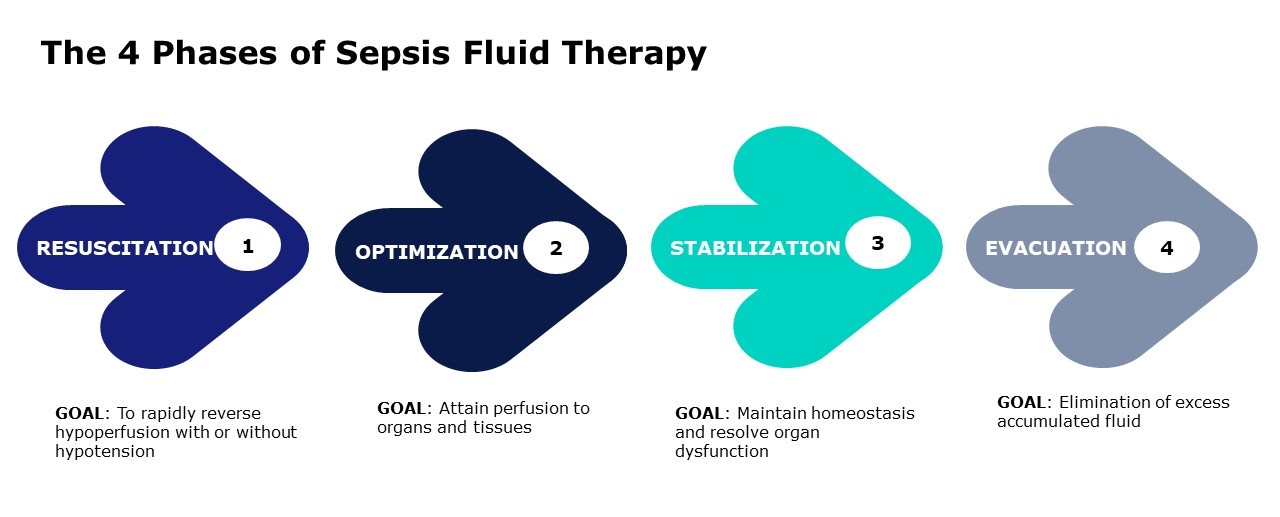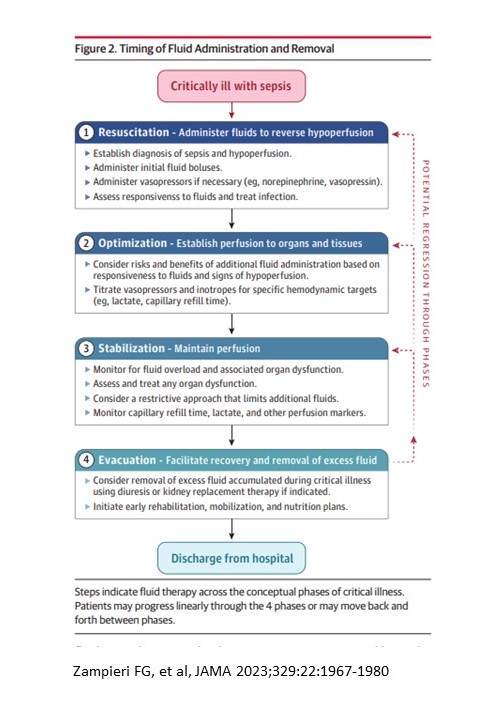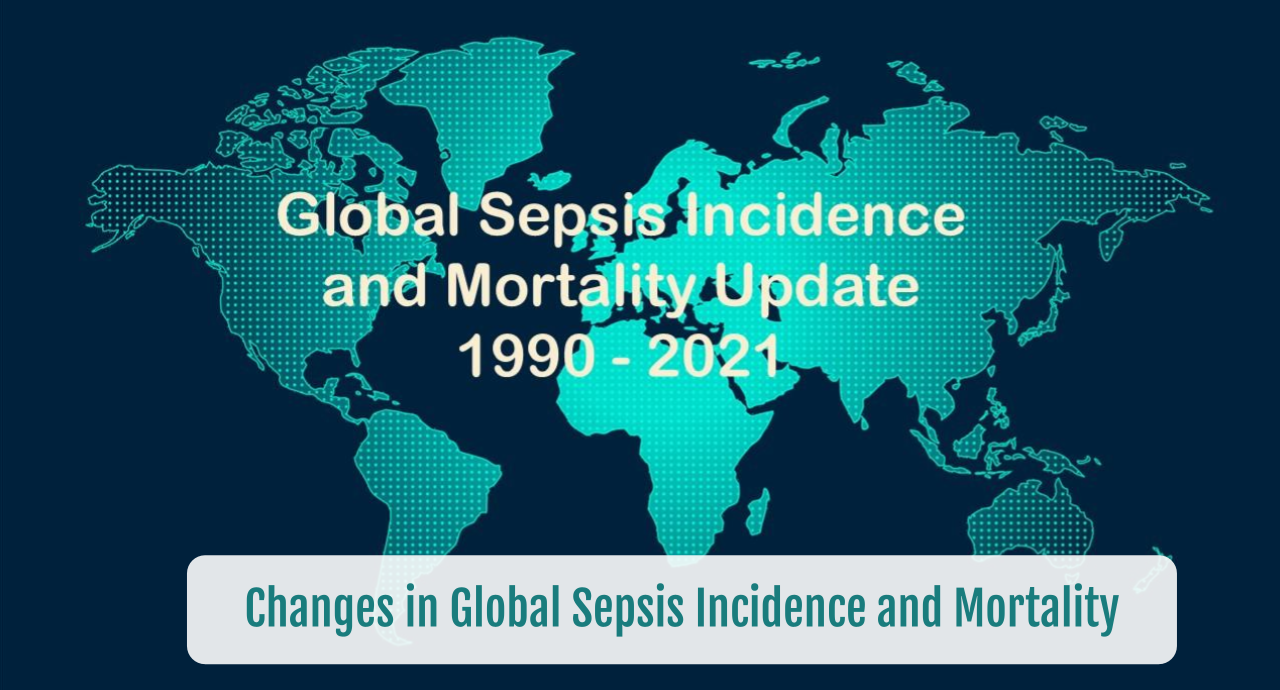The 4 Phases of Fluid Therapy in Sepsis
SUMMARY
- Fluid therapy is an important component of sepsis therapy and may be administered during any phase of sepsis illness.
- While hemodynamic benefits may occur during initial fluid therapy, excessive amounts can be deleterious.
- Timing, rate and volume of fluid administration and removal vary based on the phase of critical illness.
BACKGROUND
- Intravenous fluid therapy is an essential part of sepsis therapy.
- Fluid therapy occurs in 4 phases of sepsis critical illness.
- Each phase is associated with a separate clinical state of the patient.

1. RESUSCITATION PHASE – rapidly reverse hypoperfusion
- Approximately 57% of sepsis patients will respond to fluids with an increase in stroke volume and cardiac output.
- Fluid therapy should continue until the patients mean arterial pressure no longer increases with IV fluid administration
- There are 3 methods of fluid administration (see Table below), with fluid bolus administration preferred

2. OPTIMIZATION PHASE – Attain perfusion to organs and tissues
3. STABILIZATION PHASE – Maintain homeostasis and resolve organ dysfunction
- Few studies evaluate fluid therapy during the Optimization and Stabilization phases.
- No difference in 90 day mortality with a restrictive vs standard fluid therapy management approach after initial resuscitation.
4. EVALUATION PHASE – Excrete excess accumulated fluids
- Patients may require diuretics or kidney replacement therapy
- The optimal rate and duration of kidney replacement therapy fluid removal in this phase is not known.
- Slow or rapid kidney replacement may have higher mortality and longer duration of treatment than moderate rate flows.

CONCLUSIONS
- Fluid therapy remains a mainstay for the treatment of the sepsis patient.
- The total amount of fluid and rate of administration for proper resuscitation remains debated topics.
- The 4 phases of fluid therapy represent a separate clinical status of the sepsis patient with its own considerations.
To receive articles like these in your Inbox, you can subscribe to Sepsis Program Optimization Insights.
Erkan Hassan is the Co-Founder & Chief Clinical Officer of Sepsis Program Optimization where he designs & oversees the implementation of solutions to optimize sepsis programs.
To discuss your organization’s Barriers of Effective Sepsis Care, contact Erkan by phone (844) 4SEPSIS (844-473-7747), email (erkan@spo.icu), or video chat.





